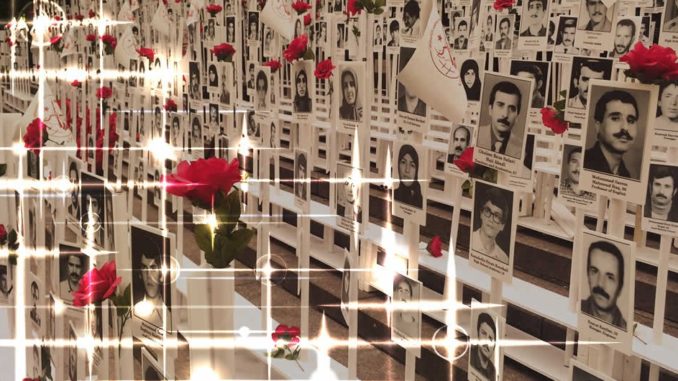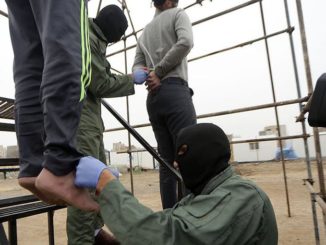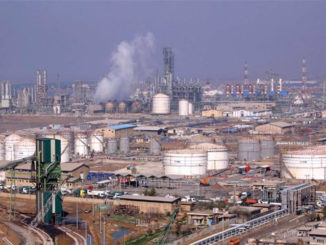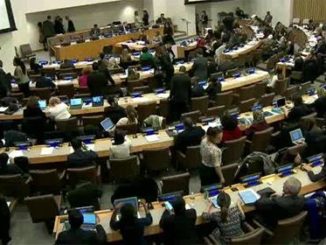
In a horrific crime in the summer of 1988 in Iran, more than 30,000 political prisoners were summarily and extra-judicially executed in a matter of a few months following a fatwa (religious decree) by then Supreme Leader, Ayatollah Khomeini who appointed a “Death Committee” to oversee and approve all death sentences. Most victims were buried in secret mass graves and their families are still waiting for an answer and justice to be served.
Amnesty International released a new investigative report on Monday shedding lights on the different ways the Iranian authorities destroying mass graves of victims of 1988 killings in their criminal cover-up and deliberate efforts to destroy evidence of the massacre.
The report states: “Today, it is still not known exactly how many prisoners were extra-judicially executed in 1988, although minimum estimates are between 4,000 and 5,000.”
AI reports, “International rights groups estimate as many as 5,000 people were executed, while the Mujahedeen-e-Khalq puts the number at 30,000.”
Mass graves have been gradually leveled to escape any possible future accountability, report adds, “The account identifies seven suspected or confirmed mass grave sites that have faced destruction between 2003 and 2017. They are located in or near Behesht Reza cemetery in Mashhad, Khorasan Razavi province; Behesht Abad cemetery in Ahvaz, Khuzestan province; Vadieh Rahmat cemetery in Tabriz, East Azerbaijan province; Golestan Javid cemetery in Khavaran; Tazeh Abad cemetery in Rasht, Gilan province; the Baha’i cemetery in Qorveh, Kurdistan province; and the grounds of the former premises of the Revolutionary Court in Sanandaj, Kurdistan province.”
According to Amnesty International,
-
Bulldozing, road construction, mass rubbish dumping and new burial plots used to compromise and destroy mass graves.
-
Iranian authorities deliberately eradicating vital forensic evidence that could hamper the rights to truth, justice and reparations.
A 1990 Amnesty report stated, “Some who appeared (before the Death Committee) were asked to identify themselves. Those who responded ‘mujahedeen’ were sent to their deaths, while others were questioned about their willingness to ‘clear minefields for the army of the Islamic Republic’.”
AI called for an enquiry commission to probe the officials of the “Death Commission”, as it was known among former Iranian political prisoners, many of whom, according to the AI report, still hold offices in the Iranian regime. The report added that no Iranian official has been investigated or brought to justice.
Two high profile examples are Ebrahim Raisi a challenger to Hassan Rouhani in last year’s presidential election and now the custodian of the wealthiest Imam Reza Foundation in Mashhad, and Mostafa Pour-Mohammadi, Iran’s Justice Minister in Rouhani’s first cabinet. Rouhani also chose Alireza Avii, a member of the Death Commission in Dezful to head the Justice Ministry in his second cabinet.
The Death Commission oversaw the massacre of 30,000 political prisoners in the summer of 1988, who were mostly members and supporters of the opposition People’s Mojahedin Organization of Iran (PMOI or MEK). Raisi and Pour-Mohammadi were two of the four members of the Death Commission.
Reportedly, Khomeini issued a fatwa, a religious decree, authorizing the massacre that occurred in the summer of 1988. The Commission allegedly handed down some 30,000 death sentences. Courts lasted an average of three minutes. Some of the political prisoners who survived the slaughter have written or spoken of their ordeals.
The judges asked only one question, “Do you still believe in Mojahedin?” Gruesome accounts of survivors, especially female prisoners, often leave the listeners in shock.
An audio tape that was published on his website by Ayatollah Hossein-Ali Montazeri’s son in August 2016 brought much of this into the light. Montazeri objected to the mass executions in 1988. He spent the rest of his life under house arrest and died in 2009. Montazeri can be heard on the audio tape telling a meeting of the Death Commission that they are responsible for a crime against humanity. “The greatest crime committed during the reign of the Islamic Republic, for which history will condemn us, has been committed by you. Your names will in the future be etched in the annals of history as criminals,” he said.
Pour-Mohammadi has since not only admitted to his role in the Death Commission but also boasted that he was proud to “carry out God’s will” and said “I have not lost sleep over what I did.”
Amnesty’s report also stated, “Most of those extrajudicial executed were serving lengthy prison sentences, often imposed for their peaceful dissent, including for activities such as distributing newspapers and leaflets, taking part in peaceful anti-government demonstrations, and having real or perceived affiliations with various political opposition groups. Some had been released several years earlier and were re-arrested in the weeks leading up to the killings. Others had already completed their sentences but had not been released because they refused to make statements of ‘repentance’.”
The US House of Representatives passed a bill condemning human rights violations in Iran including the massacre of political prisoners in 1988. The Chairman of the House Foreign Affairs Committee, Ed Royce, wrote, “The worst act against the Iranian people was the execution of 30,000 political prisoners in Iran by the regime over the course of four months in 1988. Many of those prisoners had just completed prison sentences before being executed.”
Calls for justice for the victims continue, and calls for the international community to step in on behalf of those prisoners and their families, continue as well. The new house bill also condemns hostage-taking tactic among foreign national and Iranians holding dual citizenship that seems to be used by the regime.




